A Telegraph tour of the English high street: Lewes, East Sussex – scarcely spoilt, much preserved
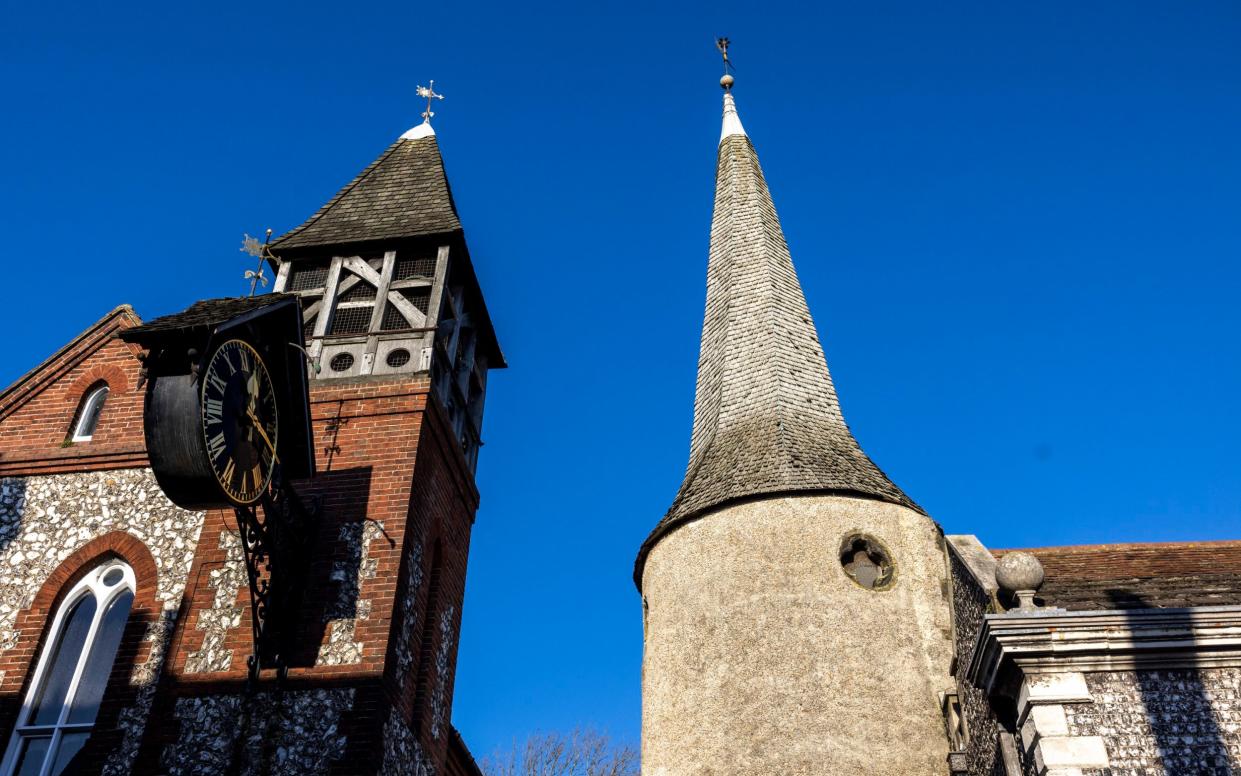
- Oops!Something went wrong.Please try again later.
The traditional British high street was, for so many, the beating heart of their town. But as huge chains consumed spaces once filled by local independent businesses – and struggling firms began to disappear entirely – was the soul of our towns lost? Christopher Howse is travelling the nation to speak to local people about their high street. How it has changed, what they miss… and why there are still joys to be found. This week, Christopher explores Lewes in East Sussex.
There are secrets beneath the old buildings of Lewes, but even the surface is strikingly attractive. Its long High Street, dominated by a castle, runs along a ridge above the River Ouse.
As I walked eastwards downhill along the High Street for three quarters of a mile, the open country of Malling Down was always before me. No multi-storey car park spoils the continuous mix of centuries-old buildings, no concrete and glass sore thumbs.
“Scarcely anything at Lewes has been spoilt and much has been preserved and exemplarily restored,” wrote Sir Nikolaus Pevsner, the indefatigable historian of England’s buildings, in 1965. I wanted to see how it had fared since.
From the railway station I walked up to the ridge by way of Keere (pronounce “care”) Street, a charming lane of timber-framed, local brick and flint houses, shoulder to shoulder, with old brick pavements and a cobbled carriageway with chickweed growing in it. Old brick pavements are such a success in towns that I sometimes dream of them.
“The Prince Regent drove a coach and horses down Keere Street for a wager,” says a notice placed at the bottom by order of Lewes District Council. “Access by vehicles to and from the High Street is now forbidden.”
At the top on one side was the Fifteenth Century Bookshop. It was closed, opening only on Saturdays and Sundays. A & Y Cumming at No 84 has closed down, but there are others in the High Street, notably the Bow Windows bookshop in a tile-hung, gabled building from the 16th century.
Daniel Defoe, travelling through Lewes in the 1720s found it “a fine pleasant town, well built, agreeably situated”. He realised that good families and fortunes added to its character. It was a county town and the High Street mixed administrative, commercial and domestic buildings as it still does.
Two medieval churches overlook the upper High Street. St Anne’s and St Michael’s both have wooden shingles tiling their steeples. Both churches are of flint with their long sides running along the street. St Michael’s is one of three churches in Sussex with round towers. This avoided having to import quarried freestone to hold small stones such as flint in place at the corners. The flint at St Michael’s tower should be visible, but the surface was rendered in modern times.
The survival of Lewes’s ancient buildings is explained by its former prosperity and an absence of later industrial development. Its population in 1841 was 9,199 and 100 years later only 10,784. By 2012 it was 16,500 and has not increased since.
Lewes was one of the 18 towns visited by Alec Clifton-Taylor from 1978 for his marvellous television series Six English Towns and its two successor series. I made it a hobby to go and see each of them, from Bradford-on-Avon to Berwick-upon-Tweed. I recommend such a tour.
Clifton-Taylor seemed born to broadcasting, though he took to it at 70. His great book had come out in the 1960s: The Pattern of English Building, on the history of building materials. Because of his expertise, Nikolaus Pevsner asked him to contribute to 18 of his volumes of The Buildings of England.
Thanks to Clifton-Taylor, my progress down the High Street was soon distracted, just below the Norman castle on its two artificial mounds. Bartholomew House at Castle Gate is not what it seems – a neat early 19th-century double-fronted brick house standing outside the medieval Barbican gateway. It is not built of brick. It is faced with mathematical tiles.
No one quite knows why they are called mathematical, but they were made to attach to laths on a wall and overlap to provide a vertical surface. They are a fascinating contrivance, not always easy to distinguish from the real thing. When I posted a picture of Bartholomew House on X, more than 150,000 people took a look at it within a day.

The motive for hiding the timber frame here and in older Lewes buildings came from a Georgian taste for regular and correct facades, not a wealth of oak beams. So Lewes High Street looks predominantly Georgian, with older interiors hidden.
Characteristic of Lewes are hand-moulded red bricks (often with grey ends from their method of firing), handmade tiles for roofs and for tile-hung walls, white weatherboarding, mathematical tiles, Sussex iron for balconies, and everywhere flint, found in clay pockets in the chalk Downs.
When labour was cheap, flints were sorted for size and set in courses like rows of eggs. More skilled was to knap the flints, chipping them to expose their vitreous innards as a facing. The most careful treatment was to square the knapped flints to minimise gaps.
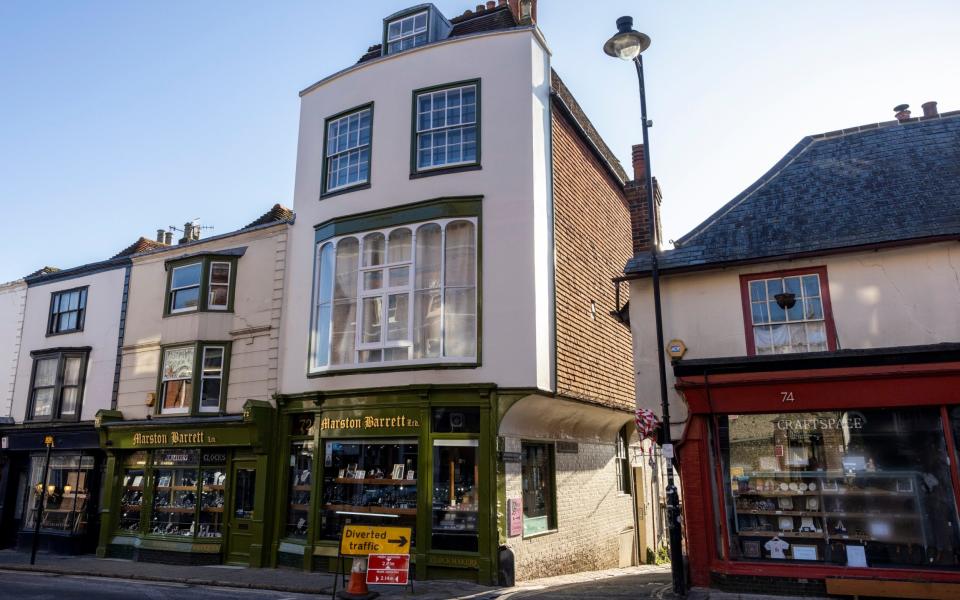
It is all very well heritage-fanciers like me coming down from London and enjoying the beauties of Lewes High Street, but people have to live here. There are clothes shops, jewellers, estate agents, but where do they do the weekly shop? “There’s a Waitrose near the river and a Tesco’s on the other side, next to an Aldi,” a friendly faced young woman called Chloe told me as we stood on the pavement.
She has lived in Lewes for years and loves it. I’d noticed no graffiti and few empty shops (though WE Baxter, a printer founded in 1802, has gone the way of most printers). But there were a handful of charity shops, sometimes a high street’s last gasp. “I like the charity shops,” said Chloe. “This came from one,” she added, buttonholing the smart overcoat she was wearing.
The traffic has to wait for lights to change, so narrow is the street. An “inner relief road”, proposed in the 1960s would have driven a dual-carriageway through the town, with a large gyratory and footbridges or subways for pedestrians to cross this Chinese Wall. The Friends of Lewes fought it and won. A bypass was built to the south and a bridge to the north. Traffic still clogs the High Street, but at least the houses stand.
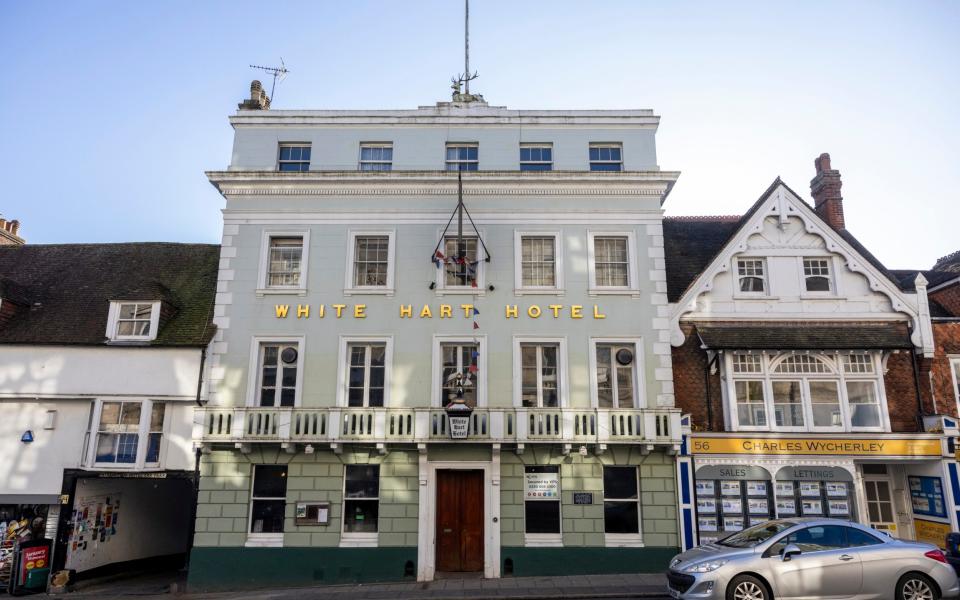
Further down the High Street, the White Hart is a thoroughgoing example of the Lewes disguise. Its regular facade is from the early 19th century, but behind is a house that was old in the 1560s when it was bought as a family dwelling by the local grandee Sir Thomas Pelham. I was sorry to find that it closed as a public house two months ago and was sold to a hotel company.
The White Hart was one meeting place for members of bonfire societies. Lewes maintains seven bonfire societies, which take Guy Fawkes night to the extreme, walking in procession with fiery crosses and flaming tar barrels, and burning in effigy politicians and other unpopular figures.
Their strong affinity with historic Lewes is mirrored by the Friends of Lewes, which aims to preserve its heritage, “despite constant pressure to develop the town”. Again it can come down to materials. They see to it that brick pavements are mended with bricks and that flint walls dividing properties along “twittens” (alleys between streets) are in one piece.
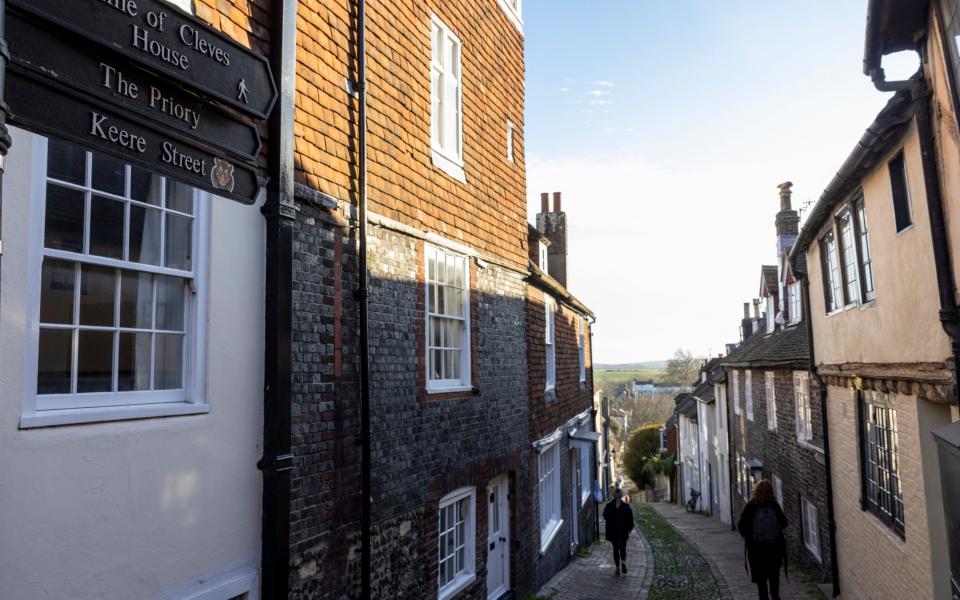
The Friends supported the conversion of Broad’s candle factory, built in 1820 near the High Street, later used to manufacture needles. As Needlemakers it houses shops and small businesses, rather than a new-build mall.
There used to be old industrial buildings by the river. Visible from the High Street bridge is the beefy 19th-century rural Gothic of Harvey’s brewery, which still goes great guns.
A railway bridge spanned the lower High Street for a century from 1868. Next to it stood Fitzroy House, a memorial library to the local MP built by his widow, who got the great George Gilbert Scott to design it in 1862. Its flamboyant Gothic, unusual for Lewes, combines polychrome brick, a tall cupola, finials and, hidden inside, the double-storey octagonal library.
Astonishingly, it was going to be demolished in 1970, but was saved by the Friends of Lewes securing Listed Building protection. Even then it decayed, with roof beams bared by the time James and Maureen Franks bought it in 1978 and devoted endless hours to restoring it. They lived there for 40 years.
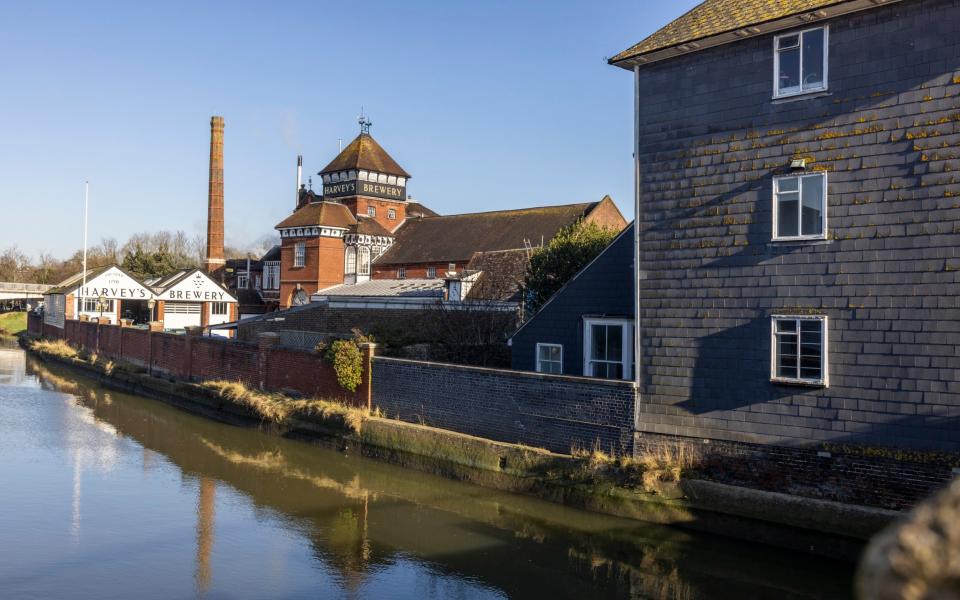
Where the railway bridge was demolished, new shops were built. It was a reversal of fortunes. “The architecture is worthless. Lewes deserved better,” wrote Nicholas Antram, the editor of the amplified Pevsner volume for East Sussex in 2012.
Lewes has been more fortunate with a public library built in 2004, with seven gables and a side wall of brick and flint chequerwork.
I hope the future of Lewes High Street is bright. It depends on constant vigilance and personal action, but the town seems just the place to supply people with those qualities.
Previously: Fishergate in Preston | Yarm, North Yorkshire | Watergate Street, Chester | Shields Road, Byker | Abbeygate Street, Bury St Edmunds

